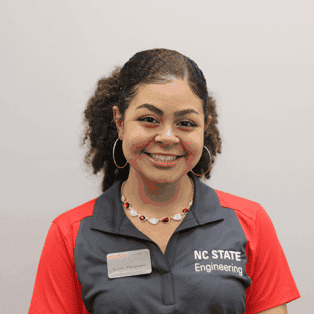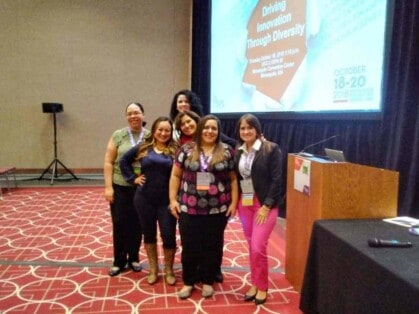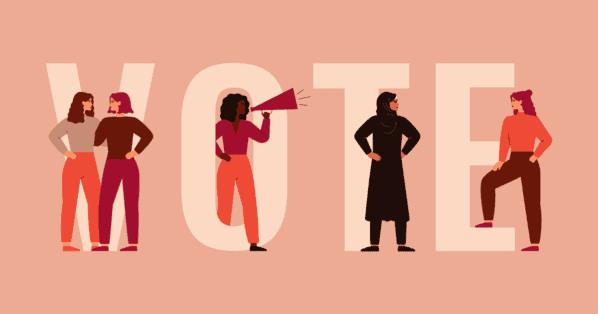“Sydney Floryanzia Finds Growth in Failure” was written by Alyssa Febres, Business Development Associate for DO Supply, Inc.
“It is ok when things get hard. When I entered into engineering, I constantly battled thoughts that I was not smart enough… But I learned that failure is a critical component of progress, it is ok when things get hard, it just means that you have a new opportunity to grow.”
-Sydney Floryanzia
As an African American woman in chemical engineering, Sydney Floryanzia knows a great deal about struggle. However, whatever challenges her distinction may afford, Sydney is focused on solving problems and encouraging those around her.

CREDIT: NC State
Sydney Floryanzia is 21 and is majoring in chemical and biomolecular engineering with minors in biotechnology and tissue engineering at NC State University. Though only at the beginning of her journey into the field of engineering, Sydney has an impressive portfolio, from being featured in a Super Bowl commercial promoting STEM for young women, to being invited to New York City to speak at TedxTeen about the unlikely connections between her racial and gender identity, STEM, and her faith. She continues to be active in sparking dialogue about important issues in the scientific community. She currently participates in undergraduate research for NC State and is involved in the Grand Challenge Scholars’ Program and the Minority Engineering Program.
Though Sydney’s achievements are abundant, she said the beauty of problem solving is her motivating determinate, not accomplishment. Sydney is passionate about using the analytical processes inherent in engineering to uncover the unlikely correlations hidden, and imminent in our world.
In sixth grade Sydney, rather reluctantly, attended a camp where she learned about the National Academy of Engineering’s Fourteen Grand Challenges of the 21st century from Dr. Laura Bottomly. Though Sydney was less than enthused to attend, Dr. Bottomly illustrated the wonders of an interconnected reality by linking the biological structure of the brain to the understanding of music. Sydney argues that this real-world application that first drew her into the world of engineering is the missing link in discussion on the deficit of women engineers.
The lack of women and minorities in STEM is startling but not surprising. According to Sydney it is a logical consequence of improper promotion, starting as early as grade school. She recounts when she joined the robotics team and was continuously dissuaded from participating and contributing by her male counterparts. “Math and science were very rarely encouraged to young girls. It wasn’t made to look desirable or relevant.”
Sydney yearned to be seen as capable as her male peers, but was sidelined and often told to focus on administrative duties. “STEM fields often fail to highlight the real-world impacts that they can have… I did well in math, but I would never want to pursue a career just for the sake of math. The reason I am passionate about chemical engineering is because of the real human issues math allows me to solve.” Indeed, Sydney’s very definition of engineering is predicated on an actionable and tactile outcome. “Engineering is problem solving, but its problem solving focused on an optimized outcome.”
Solving problems through an analytical process can be utilized in nearly any industry. To Sydney, engineering gives her perspective on success and failure.
Sydney recounts the internalization and eventual imposter syndrome that she developed through high school.
“Early on I found it difficult because no one in my high school was really interested in engineering. The only people in the robotics club at my school were white guys, and I felt very out of place. I wanted to do ‘real science’ with everyone else, I was eager to learn. I found that women often are made to feel like they must prove their intellect, and overly so, they have to show they can always keep up. Failure becomes terrifying.”
“Being a woman is an advantage—not a disadvantage—in science.”
Though being a minority and a female in a STEM program was difficult, Sydney realized that being a woman and being in engineering were not only compatible, but two complementary qualities. “I realized that I bring a lot to the table because I am a woman. From encouraging and building my teammates and peers to providing a different perspective to a problem, being a woman is an advantage—not a disadvantage—in science.”
“If I could go back in time and tell myself one thing, I would say that It is ok when things get hard. When I started my second year at NC State, I constantly battled thoughts that I was not smart enough. When the assignments got difficult, I would begin to doubt myself, I would think, “maybe there is a reason why there are no girls in engineering, especially black girls.” But I learned that failure is a critical component of progress, it is ok when things get hard, it just means that you have a new opportunity to grow. Media has progressed significantly in its representation of science, but I think there still exists a misconception about the nature of discovery and the scientific process. You see people like Tony Stark go into his lab and in five minutes make something amazing, but science is all about trial and error. Failure is a given, how you choose to optimize what you are given is what really determines success.”
“Failure is a given, how you choose to optimize what you are given is what really determines success.”
Sydney has not fully determined her plans after graduation; her considerations include graduate school or beginning a career the biopharmaceutical industry. However, whatever she decides to pursue, she is dedicated to empowering women and solving problems that impact our society.
Related content:
- From Egypt to the Real Life Stark Enterprises: Nour Hussein
- Women in Motor History: Encouraging Young Girls in STEM
- Finding Beauty—In Space and on Stage
- Black History Month: Sojourner Truth on #EachForEqual






